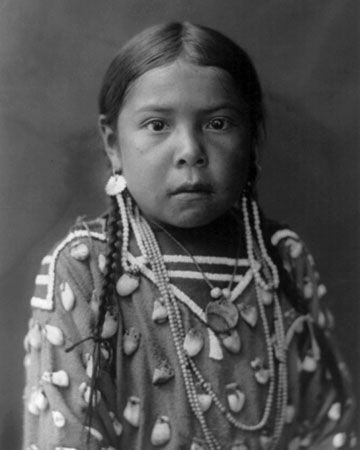The Native Americans called  the Crow were great hunters and warriors of the northern Great Plains. They called themselves the Apsáalooke (Children of the Large-Beaked Bird), which was translated by Europeans as “crow.”
the Crow were great hunters and warriors of the northern Great Plains. They called themselves the Apsáalooke (Children of the Large-Beaked Bird), which was translated by Europeans as “crow.”
The Crow were originally united with the Hidatsa, a farming people who lived in what are now North and South Dakota. In the early 1700s the Crow broke away from the Hidatsa and traveled west, settling in the Yellowstone River region. There the Crow gave up farming to become bison (buffalo) hunters.

 While on the hunt, the Crow lived in temporary camps of cone-shaped tipis. They used bison skins to cover their tipis and to make clothing. They ate bison meat and also gathered berries, roots, and other wild plants for food.
While on the hunt, the Crow lived in temporary camps of cone-shaped tipis. They used bison skins to cover their tipis and to make clothing. They ate bison meat and also gathered berries, roots, and other wild plants for food.
 In the early 1800s white traders and settlers began arriving in Crow territory. At first the Crow were friendly to the newcomers. Many Crow men joined the U.S. Army as scouts. In the 1860s and 1870s they helped the Army in battles against other Plains Indians. But at the same time American settlers disrupted the Crow way of life. White hunters killed the great bison herds. In 1868 the Crow agreed to move to a reservation in Montana that covered only a small part of their traditional homeland. At the end of the 20th century there were more than 9,000 Crow, mostly in Montana.
In the early 1800s white traders and settlers began arriving in Crow territory. At first the Crow were friendly to the newcomers. Many Crow men joined the U.S. Army as scouts. In the 1860s and 1870s they helped the Army in battles against other Plains Indians. But at the same time American settlers disrupted the Crow way of life. White hunters killed the great bison herds. In 1868 the Crow agreed to move to a reservation in Montana that covered only a small part of their traditional homeland. At the end of the 20th century there were more than 9,000 Crow, mostly in Montana.




